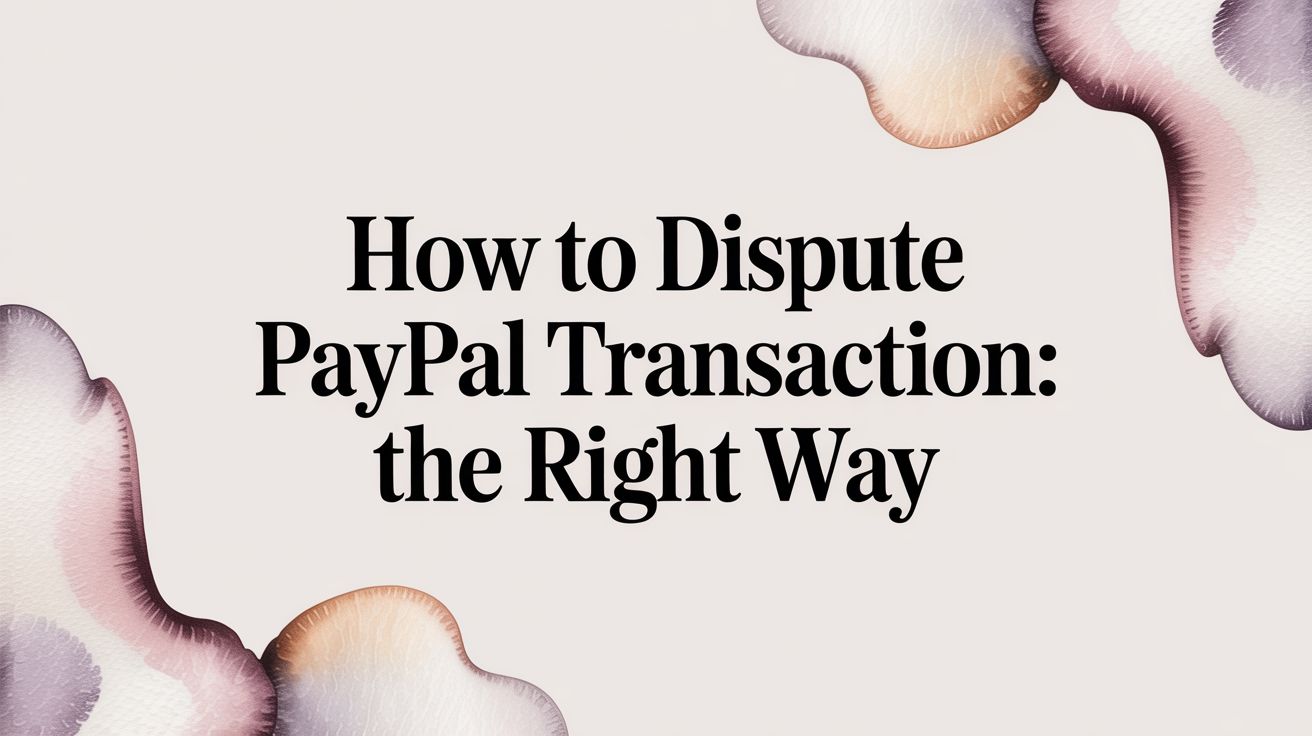
Running an Amazon business comes with its own challenges, and one problem that store owners might face is Amazon FBA shipping chargebacks.
Let's talk about how FBA stores work; your customer makes a purchase, pays for shipping, and everything seems smooth. Suddenly, you discover that the customer has disputed the transaction, leading to a refund that includes the shipping cost.
It's not just about the money; it's about understanding why these chargebacks happen and how they can affect the stability of your Amazon store.
Understanding Amazon FBA shipping chargebacks is crucial for any store owner. It's not just a matter of a lost sale; it's about comprehending the dual nature of chargebacks – one tied to customer payments and the other to FBA fees. Knowing the type you're navigating can make all the difference in keeping your profit intact.
In this comprehensive guide; we'll discuss the ins and outs of FBA shipping chargebacks. From understanding the different types of chargebacks to proactively managing them, we're here to guide you through the process.
What is Amazon FBA Shipping Chargeback?
Breaking down Amazon FBA shipping chargebacks is straightforward. A chargeback happens when a customer disputes a purchase, wanting a refund that includes the shipping cost. Here's the breakdown:
1. Customer's Shipping Payment Chargebacks
- Customer Disputes: If a customer is unhappy with their purchase, they can contact their bank or credit card company, stating they want a refund, covering both the product and shipping.
- Amazon's Response: Initially, Amazon credits you with the shipping money. However, if the customer's refund is approved, Amazon deducts the shipping cost from your account, appearing as a chargeback on your financial reports.
- Seller Responsibility Clarification: Although you aren't directly responsible for shipping mishaps, Amazon ensures financial accuracy by charging you back for the shipping cost.
2. FBA Fees Chargebacks
- Less Common Issues: These chargebacks occur due to errors in shipment details like weight, dimensions, or product categorization.
- Notification and Communication: Amazon notifies you in advance, explaining the reasons for the chargeback on Amazon. This provides an opportunity for you to address and resolve the issues.
Understanding Amazon FBA shipping chargebacks is essential for managing your business finances effectively. It's not just about the money; it's about grasping the ins and outs to ensure the smooth operation of your Amazon business.
Marketplace Facilitator Tax-Shipping vs. Shipping Chargeback
Understanding the distinction between "Marketplace Facilitator Tax-Shipping" and "Shipping Chargeback" involves delving into the specifics of how transactions are handled on Amazon.
When we refer to "Marketplace Facilitator Tax-Shipping," we're talking about a scenario where a chargeback specifically deals with the sales tax collected on the shipping cost. In simpler terms, if a customer paid sales tax on the shipping fees for a product and then sought a refund, this is what we're addressing.
On the other hand, when we discuss a "Shipping Chargeback," it encompasses not only the sales tax related to the shipping but also the actual cost of shipping itself. In simple terms, this covers the entire amount that the customer initially paid for shipping, inclusive of any associated sales tax.
It's crucial to recognize that while these terms may be used interchangeably at times, they carry distinct implications. The interchangeability might stem from a broad understanding that both involve a reimbursement related to shipping, but the problem lies in the details.
Being aware of these fine points is vital, especially when interpreting financial reports. This understanding ensures clarity when dealing with tax-related matters and refunds, akin to discerning between state and federal taxes – similar concepts, yet distinct in their application to FBA Shipping Chargebacks.
Reviewing Amazon Seller Central Reports
Checking your Amazon Seller Central reports might not sound like the most exciting part of managing your business, but when it comes to understanding Amazon FBA shipping chargebacks, it's your compass. Let's break down what this involves.
Monitoring your financial reports on Amazon Seller Central is like looking at a map – it helps you know where you are and where you're headed. Specifically, when dealing with shipping chargebacks, keep an eye out for any adjustments in your income related to shipping.
Identifying these chargebacks in your reports is essential. You're not just tracking your sales; you're keeping tabs on the financial currents. Look for sections that detail shipping income, and if you see adjustments or debits related to chargebacks, that's your signal. It's like noticing a change in wind direction – it tells you there's something to navigate.
Amazon provides tools and resources within Seller Central to aid this process. Reports are there not to confuse but to give you a clear view of your financial voyage.
Understanding and interpreting these reports is not just for accountants; it's for every Amazon seller steering their ship through the sometimes choppy waters of online retail. Stay vigilant, keep an eye on those reports, and you'll be better equipped to navigate any chargeback challenges that come your way. It's your roadmap to financial stability in the vast world of Amazon FBA.
5 Common Reasons for FBA Shipping Chargebacks
In Amazon FBA shipping chargebacks, there are specific reasons that sellers commonly encounter. Let's dive into the nuances that might lead to these chargebacks, focusing on Amazon FBA-related issues along with shipping-related concerns.
1. Miscalculations in Shipment Weight
One common reason leading to Amazon FBA shipping chargebacks involves inaccuracies in calculating the weight of shipped products. When the declared weight doesn't align with the actual weight during shipment, it triggers discrepancies, impacting the FBA fulfillment process. Sellers must pay meticulous attention to ensure precise weight specifications to avoid these chargebacks.
2. Errors in Shipment Dimensions
Another significant contributor to chargebacks arises from discrepancies in the dimensions provided for a product and its actual package size. It becomes critical within the Amazon FBA context as inaccurate dimensions affect the allocation of storage space within Amazon's fulfillment centers. Addressing this issue is pivotal to preventing chargebacks tied to dimension-related errors.
3. Incorrect Product Categorization
Misclassifying products can lead to chargebacks, particularly if they influence shipping costs or sales tax calculations. Within the Amazon FBA framework, proper categorization is paramount. Ensuring products are accurately classified not only avoids chargebacks but also contributes to the overall efficiency of the fulfillment process.
4. Late Shipments and Delivery Issues
Timeliness is a cornerstone of the FBA model, and any deviations from specified shipping timelines can result in chargebacks. Late shipments or delivery problems not only impact customer satisfaction but also trigger financial penalties within the FBA system. Sellers need to prioritize adherence to shipping schedules to mitigate the risk of chargebacks in this category.
5. Failure to Comply with Amazon Policies
Violating Amazon's shipping and fulfillment policies is a direct path to chargebacks. Sellers must thoroughly understand and adhere to Amazon's guidelines, as policy non-compliance can lead to financial repercussions. Ensuring alignment with these policies is not only a best practice but a crucial strategy to avoid chargebacks related to policy violations.
Addressing issues such as weight calculations, dimension accuracy, product categorization, adherence to shipping timelines, and policy compliance is key to fostering a seamless and chargeback-resistant operation within the Amazon ecosystem.
9 Tips to Managing FBA Shipping Chargebacks
Dealing with FBA shipping chargebacks on Amazon requires strategic handling to minimize their impact on your business. Here are practical tips specifically tailored for businesses facing FBA shipping chargeback challenges:
1. Accuracy in Product Information
Ensure that all product details, including weight, dimensions, and categorization, are accurately entered in your Amazon listings. Any discrepancies can lead to chargebacks, so meticulous attention to detail is crucial.
2. Regularly Update Product Listings
Keep your product listings up-to-date, especially if there are any changes in product specifications. Timely updates help prevent chargebacks resulting from outdated or incorrect information.
3. Utilize Amazon's Tools for Shipment Accuracy
Leverage the tools provided by Amazon to check and confirm the accuracy of your shipments. These tools are designed to help you avoid chargebacks related to weight, dimensions, and other fulfillment criteria.
4. Stay Informed About Amazon's Policies
Stay abreast of Amazon's shipping and fulfillment policies. Understanding and complying with these policies is crucial to preventing chargebacks resulting from policy violations.
5. Implement Quality Control Measures
Before sending products to Amazon's fulfillment centers, conduct thorough quality control checks. This includes verifying that products match their descriptions and that there are no discrepancies in weight, dimensions, or categorization.
6. Proactive Communication with Amazon Support
If you encounter issues or anticipate challenges, communicate proactively with Amazon Seller Support. Keeping the lines of communication open can help you address potential problems before they escalate to chargebacks.
7. Utilize Amazon's FBA Fee Preview
Take advantage of Amazon's FBA Fee Preview feature, which allows you to estimate fees before sending products to fulfillment centers. This helps you anticipate and address potential chargeback triggers.
8. Regularly Review Amazon Seller Central Reports
Stay vigilant by regularly reviewing your Seller Central reports, especially those related to shipping income and chargebacks. Timely identification and understanding of chargebacks can help you take corrective actions promptly.
9. Educate Your Team on FBA Guidelines:
If you have a team managing your Amazon operations, ensure they are well-versed in Amazon FBA guidelines. Proper training reduces the likelihood of errors that can lead to chargebacks.
By incorporating these tips into your Amazon FBA management strategy, you can navigate the challenges of shipping chargebacks more effectively, maintaining a smoother and more reliable operation within the Amazon ecosystem.
Final Thoughts
In the realm of Amazon FBA shipping chargebacks, the key takeaway is proactive prevention. From accurate product details to regular updates and quality control, attention to detail is paramount. Utilizing Amazon's tools, staying informed about policies, and fostering open communication with Amazon Support form the backbone of a chargeback-resistant strategy.
Beyond the basics, a unique insight emerges: chargeback management is not just about resolving errors but instilling practices that prevent them. This forward-thinking approach, coupled with a vigilant eye on Seller Central reports, ensures not only a smoother navigation of occasional challenges but a course set for sustained success in the dynamic world of Amazon FBA.







.svg)







.svg)
.svg)
.svg)